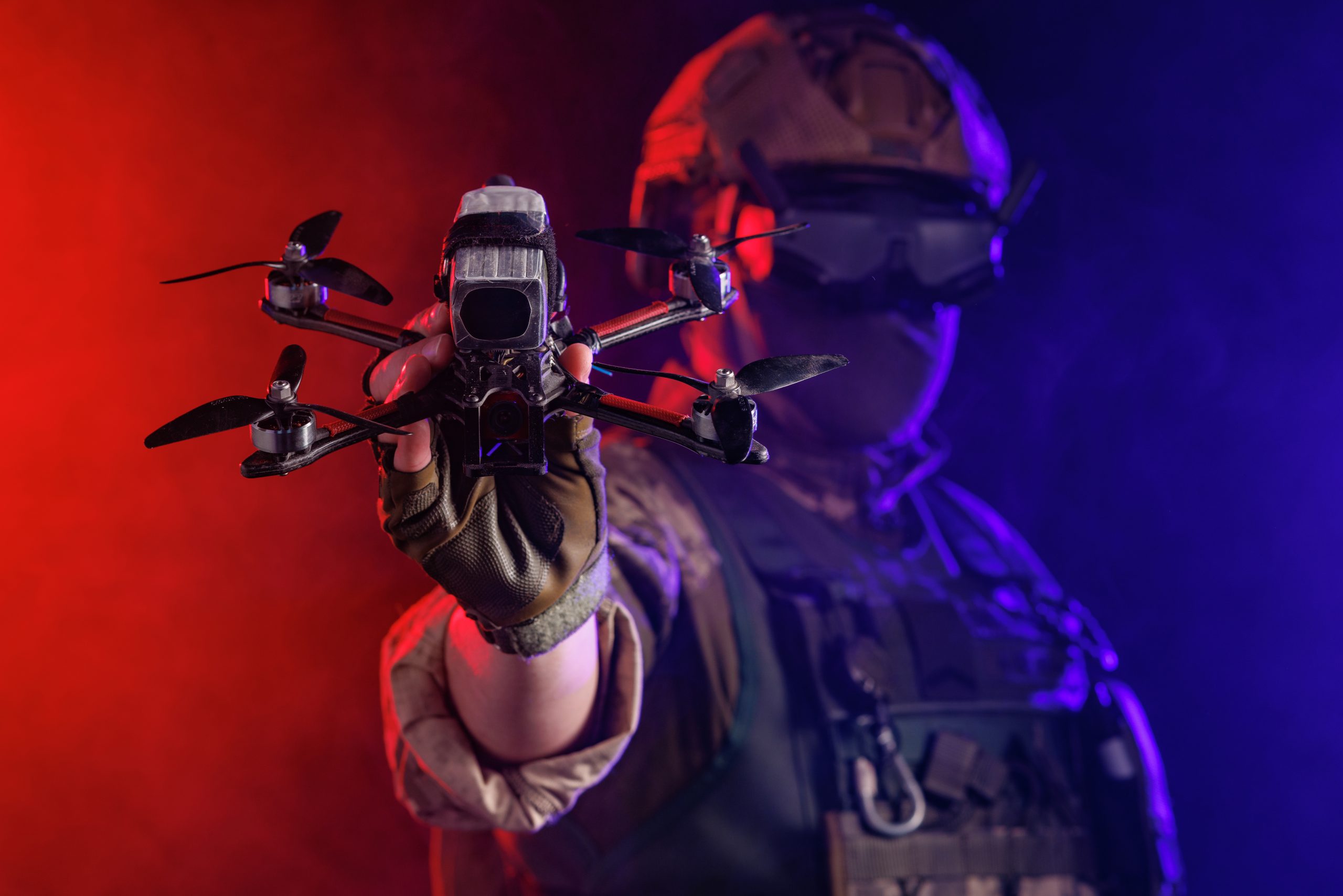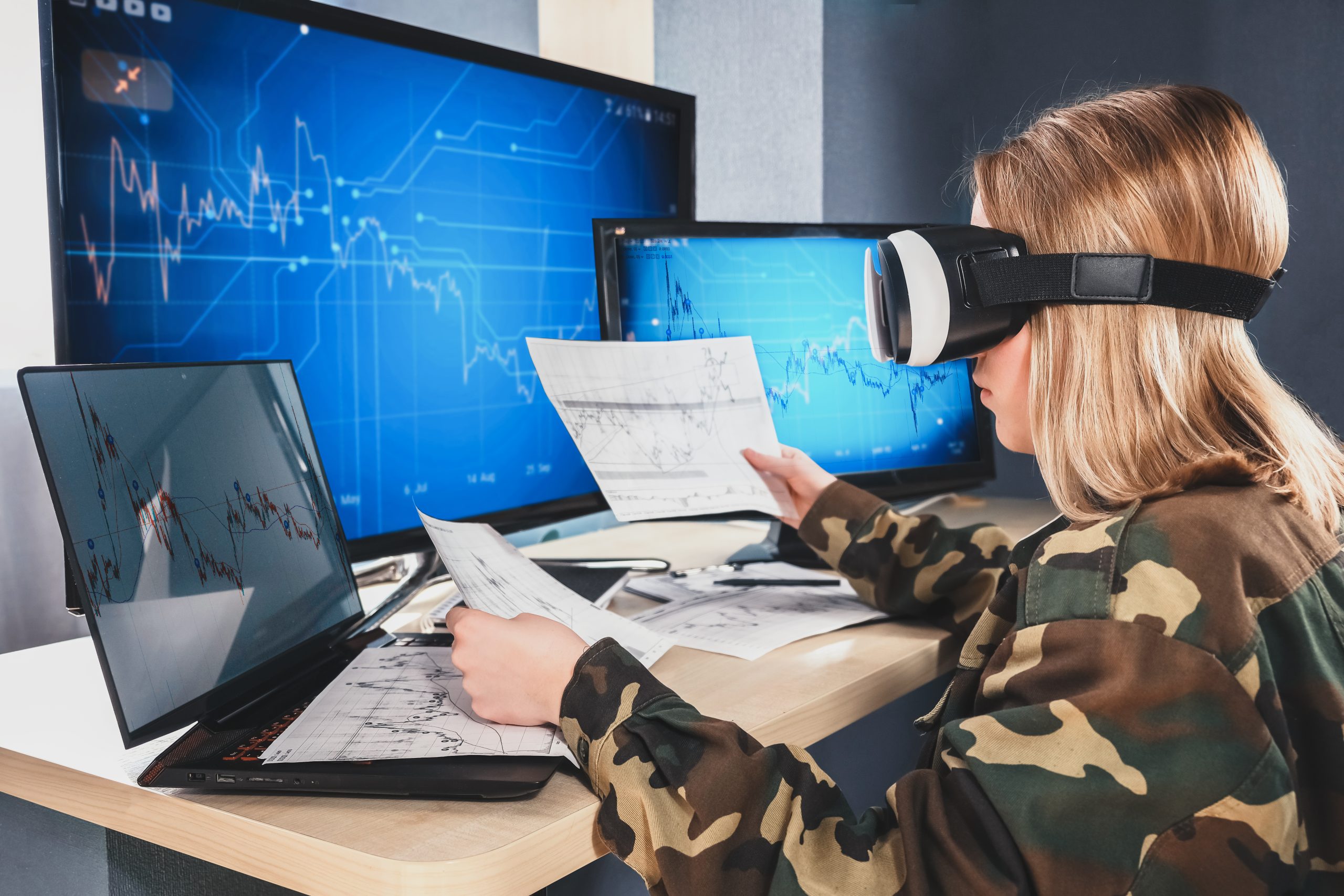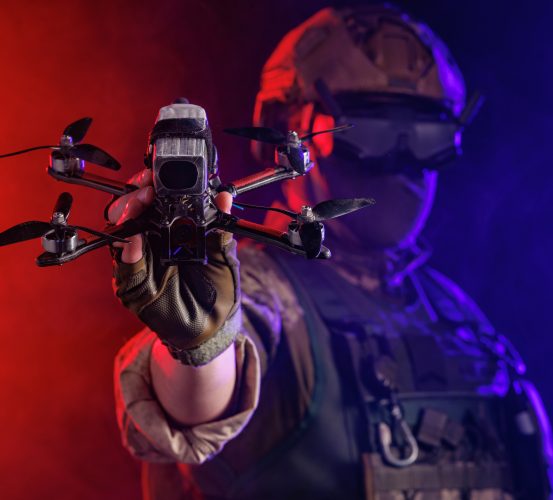Overview
From operations rooms to forward bases, the biggest shift in defense today isn’t just new missiles or faster jets — it’s how militaries see, train, and decide. Immersive technologies like AR (Augmented Reality), VR (Virtual Reality), MR (Mixed Reality), and XR (Extended Reality) are rapidly becoming as critical as traditional hardware.

What Are Immersive Technologies in the Defense Industry?
In the defense context, immersive technologies usually include:
Virtual Reality (VR) – Fully simulated 3D environments for training, mission rehearsal, and experimentation.
Augmented Reality (AR) – Digital overlays on the real world through visors, helmets or handheld devices (maps, targets, guidance, status info, etc.).
Mixed and Extended Reality (MR/XR) – Blends physical and digital content with spatial awareness, tracking, and real-time data integration.
Haptic devices and motion platforms – Vests, gloves, seats, and simulators that provide realistic feedback such as vibration, recoil, or motion.
Together, these tools create a synthetic extension of the battlefield, where defense personnel can train, plan, and operate with far less risk and cost than in fully live environments.
Why Defense Organizations Are Adopting Immersive Technologies
Modern defense organizations face a demanding mix of pressures:
- Training for complex, multi-domain warfare (land, sea, air, space, cyber).
- Rising costs of live exercises (fuel, ammunition, maintenance).
- Need to reduce training accidents and casualties.
- Pressure to upskill large numbers of personnel quickly on increasingly complex systems.
- Rapidly evolving threats: drones, autonomous systems, cyberattacks, and urban combat.
Immersive technologies address these pain points by offering:
- Safe environments to practice dangerous scenarios.
- Repeatable, measurable training sessions with detailed analytics.
- Scalable training — multiple participants, even in different locations, can share the same virtual space.
- Real-time data fusion in live operations, giving personnel more information in a more intuitive way.
In short, immersive technologies in the defense industry act as a force multiplier: better preparation at lower risk and cost.
Immersive Training & Simulation: The New Digital Bootcamp

Training is currently the most mature and widely adopted use case for immersive technology in defense.
Virtual Battlefields Instead of Basic Drill Grounds
VR and XR simulators allow defense forces to:
- Run mission-specific scenarios such as urban combat, convoy operations, anti-drone drills, maritime boarding, and more.
- Simulate challenging terrain and weather that would be expensive or impossible to recreate physically.
- Let trainees make mistakes, fail, repeat, and improve — without real-world casualties or equipment damage.
This leads to higher training throughput and lower cost, because not every lesson requires a full-scale live exercise.
Connected Synthetic Training Environments
Multiple simulators — for infantry, armored vehicles, aircraft, command posts, and logistics units — can be linked into a shared virtual battlespace. This allows:
- Individual soldiers to train in VR.
- Vehicle crews to operate motion-based simulators.
- Commanders and staff to practice planning and coordination.
Everyone participates in one unified scenario, practicing communication, timing, and joint tactics in a realistic yet controlled environment.
Flight and Vehicle Simulators
High-fidelity VR/XR cockpits and driving rigs are now widely used to train:
- Pilots for combat maneuvers, formation flying, refueling, and emergency procedures.
- Drivers and commanders for armored vehicles, logistics trucks, and support vehicles.
Scenario software can be updated quickly, so new threat patterns or tactics can be introduced into training long before they are encountered in real operations. This makes virtual reality military training a strategic asset for readiness.
Augmented Reality on the Battlefield: A Digital “Sixth Sense”

If VR is about fully virtual worlds, AR is about enhancing the real world in front of the user.
Soldier-Worn AR Systems
Head-mounted AR displays and smart helmets are designed to:
- Overlay maps, navigation routes, target markers, and friendly positions directly in the field of view.
- Show thermal or low-light imagery from sensors and optics.
- Provide “see-through” capabilities around obstacles or vehicle hulls by integrating multiple cameras and sensors.
The goal is to improve situational awareness and decision-making, while reducing the cognitive load on the soldier. Some systems can even switch between training mode and operational mode, allowing the same hardware to be used in simulations and real missions.
AR for Pilots and Crew
AR and MR solutions are also being explored for:
- Fixed-wing and rotary pilots, blending digital threats and allies into their view of the real sky for more efficient training.
- Transport and utility aircraft crews, displaying approach paths, terrain, obstacles, and landing-zones in degraded visual conditions.
With this, every sortie has the potential to be both a real mission and an advanced training opportunity, powered by immersive technologies.
Remote Operations & Drone Warfare Using Immersive Interfaces

Immersive technologies are also changing how unmanned systems are operated across the defense industry.
First-Person Drone Control
Many modern small drones and tactical unmanned systems use first-person view (FPV), where operators see through the drone’s camera in a way that feels similar to VR. This offers:
- A strong sense of “presence” at the drone’s location.
- Precise maneuvering in tight spaces such as windows, tunnels, or inside buildings.
- Safer surveillance, reconnaissance, and targeted operations, while operators stay far from danger.
Immersive control stations combine headsets, ergonomic controllers, and real-time video to create a highly intuitive, game-like but serious control experience.
Telepresence for Ground and Underwater Systems
Beyond airborne platforms, immersive technologies help control:
- Explosive ordnance disposal robots in hazardous areas.
- Unmanned ground vehicles for resupply in contested zones.
- Unmanned underwater vehicles for inspection, surveillance, and mine countermeasures.
AR/VR interfaces make it easier for operators to interpret multi-sensor data spatially, rather than constantly scanning multiple 2D screens.
Digital Twins, Wargaming & Mission Rehearsal
Immersive technology is also reshaping planning, wargaming, and decision support in the defense sector.
Digital Twins of Assets and Environments
Defense organizations can build digital twins of:
- Bases, ports, airfields, and naval platforms.
- Key urban areas, border regions, or strategic terrain.
- Weapon systems, vehicles, and infrastructure.
These realistic digital replicas can be explored in VR or MR, allowing:
- Commanders to virtually walk through an area before an operation.
- Teams to rehearse routes, breaching points, and evacuation plans.
- Multiple units to practice joint operations even when they are physically in different locations.
Immersive Wargaming and Command Visualization
Immersive technologies make command and control environments more intuitive:
- Traditional maps and planning boards can be augmented with live overlays showing friendly forces, potential threats, and sensor feeds.
- Planners can “drag and drop” virtual units, replay previous missions, and test alternative strategies.
- Complex multi-domain situations become easier to understand visually, supporting faster and more informed decisions.
This type of military training simulation supports not just individuals but also leadership and strategic planning.
Maintenance, Logistics & Support: AR as a Digital Instructor
Modern military platforms are extremely sophisticated, and not everyone is an expert technician. AR helps bridge this gap inside the defense industry.
AR-Guided Maintenance
Using AR headsets, tablets, or smart glasses, technicians can:
- Follow step-by-step procedures overlaid directly onto the equipment.
- Highlight the precise bolt, panel, or connector to be inspected or replaced.
- Access 3D exploded views, torque specifications, and safety warnings in real time.
Benefits include:
- Fewer maintenance errors.
- Faster repair and turnaround times.
- Easier onboarding of new technicians who can learn “on the job” with guided overlays.
Enhanced Logistics Operations
AR tools can also support logistics by:
- Guiding staff through optimized picking routes in large depots.
- Assisting with inventory verification using visual and barcode overlays.
- Presenting real-time updates on stock levels, shipment priorities, and loading plans.
Incremental improvements in logistics efficiency can translate into significant operational advantages.
Medical Training, Telemedicine & Rehabilitation
Immersive technologies also play a vital role in health, safety, and recovery for defense personnel.
Medical and Surgical Simulation
VR and MR platforms enable:
- Realistic trauma and emergency care training, including battlefield injuries and mass-casualty situations.
- Collaborative training, where specialists in one location mentor learners elsewhere in a shared virtual environment.
- Simulation of rare or complex procedures that would be difficult to practice otherwise.
AR can assist during real procedures by showing anatomical guidance, checklists, and patient data directly in the clinician’s field of view.
Psychological Support and Rehabilitation
VR-based programs are being explored to support:
- Exposure therapy for stress and trauma-related conditions, using controlled and personalized virtual environments.
- Gradual desensitization to triggers and stressful situations.
- Physical rehabilitation through gamified VR exercises, helping patients stay engaged and motivated.
These applications help improve long-term readiness, resilience, and quality of life for serving personnel and veterans.
Key Benefits of Immersive Technologies in the Defense Industry
Across all use cases, several core benefits stand out:
- Realism with reduced risk – Personnel experience high-stress environments without live ammunition or real accidents.
- Cost efficiency – Reduced use of fuel, munitions, and wear on expensive equipment.
- Data-rich training – Every action in an immersive environment can be recorded, replayed, and analyzed for improvement.
- Faster learning – Repetition, interactive feedback, and immersion lead to stronger engagement and better retention.
- Distributed training – Units based in different locations can train together in the same virtual scenario.
For defense organizations facing budget constraints and increasing complexity, immersive technologies offer a powerful force multiplier.
Challenges and Risks of Immersive Tech in Defense
Despite the benefits, immersive technologies are not without challenges.
Hardware and Human Factors
- Headsets can sometimes be heavy or uncomfortable over long sessions.
- Issues like motion sickness, eye strain, and limited field of view must be addressed in design.
- Devices need to be rugged, secure, and compatible with existing protective gear and communication systems.
Integration and Cybersecurity
- Immersive systems must integrate with secure networks, sensors, and command systems without creating new vulnerabilities.
- Training and operational data can be sensitive and must be properly protected and managed.
- Interoperability standards are needed to ensure different systems and partners can work together.
Realism and Ethical Considerations
- No simulation can fully replicate the uncertainty, stress, and unpredictability of real combat.
- Overreliance on simulations may create a gap between virtual proficiency and real-world performance.
- There are ethical questions about gamification of warfare, especially when immersive interfaces are used to operate lethal systems.
How Defense Organizations Can Move Forward with Immersive Technologies
For defense planners, decision-makers, and industry partners, here are some practical steps to leverage immersive technologies effectively:
- Start with Clear Training Gaps- Identify skills that are costly or dangerous to train live and prioritize those for immersive simulation.
- Adopt a Modular, Scalable Architecture- Choose platforms and standards that make it easy to connect different simulators, devices, and content over time.
- Invest in Content Creation Pipelines- High-quality 3D environments, scenarios, and digital twins are crucial. They must be easy to update as tactics and technologies change.
- Blend Live and Virtual Training Thoughtfully- Use immersive tools to prepare and rehearse, then validate performance in focused live exercises.
- Listen to End-Users- Soldiers, sailors, aircrew, medics, and technicians are the ones who must use the systems. Their feedback should drive improvements in usability, comfort, and realism.
- Leverage Analytics and After-Action Review- Use data from immersive sessions to refine both training programs and operational doctrines.
The Future of Immersive Technologies in the Defense Industry
In the near future, a typical defense career might move along a seamless continuum:
- Basic skills learned in fully virtual simulators.
- Advanced drills and teamwork exercises in mixed-reality environments connected across locations.
- Live exercises enhanced with AR overlays and real-time data.
- Operations informed by digital twins, immersive planning tools, and intuitive interfaces for unmanned systems.
Immersive technologies are evolving from isolated gadgets into a strategic layer of the defense ecosystem, shaping how forces train, plan, fight, and recover.
Defense organizations that treat AR, VR, MR, and XR as long-term capabilities — rather than short-term experiments — will be better positioned to train smarter, decide faster, and protect their people more effectively in the conflicts of tomorrow.
FAQ
Q1. What are immersive technologies in the defense industry?
Immersive technologies in the defense industry include AR, VR, MR, and XR systems used for training, mission rehearsal, battlefield visualization, remote operations, maintenance, and healthcare.
Q2. How is VR used in military training?
VR is used to create realistic training scenarios, virtual battlefields, and simulators for pilots, vehicle crews, and soldiers, allowing them to practice dangerous missions with no real-world risk.
Q3. What are the benefits of AR on the battlefield?
AR improves situational awareness by overlaying maps, navigation, targets, and friendly positions directly into the user’s field of view, helping them make faster, more informed decisions.
Q4. How do immersive technologies reduce training costs in the defense industry?
Immersive technologies reduce training costs by minimizing the need for fuel, ammunition, travel, and wear on real equipment. Once the virtual environments and scenarios are created, they can be reused and updated, allowing large numbers of personnel to train repeatedly at a fraction of the cost of full-scale live exercises.
Q5. Can immersive technologies be used for joint or multinational military training?
Yes. Multiple units, even from different locations or nations, can connect to the same virtual scenario. This enables joint and multinational training exercises without the logistical complexity and expense of bringing all participants together physically.
Q6. Are immersive technologies suitable only for combat roles?
No. Immersive technologies support not just combat roles but also logistics, maintenance, medical services, intelligence, and command and control. For example, technicians can use AR for guided repairs, medics can train in VR on trauma cases, and planners can rehearse missions in 3D digital twins.
Q7. What skills can be improved using immersive defense training solutions?
Immersive defense training solutions can improve a wide range of skills, including marksmanship, decision-making under stress, team coordination, communication, navigation, threat recognition, equipment handling, and emergency response. Soft skills such as leadership and situational judgment can also be practiced in realistic scenarios.
Q8. What should defense organizations consider before investing in immersive technologies?
Before investing, defense organizations should evaluate clear training or operational gaps, total cost of ownership, hardware durability, cybersecurity, integration with existing systems, and scalability. They should also ensure there is a roadmap for content creation and updates, and that end-user feedback (from soldiers, operators, and trainers) is built into the deployment plan.













